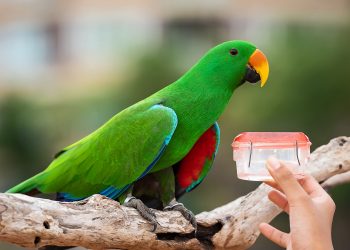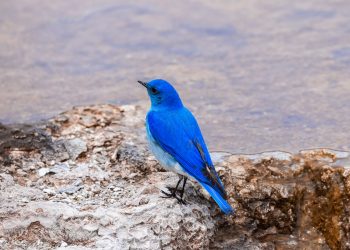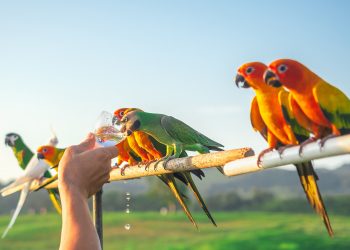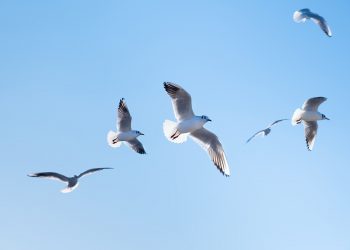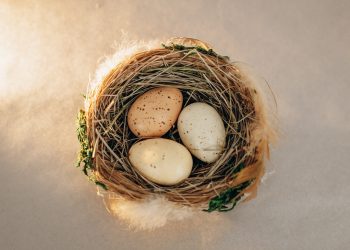Commonly used as a food source for baby birds, and in particular, Great Tits.
- High-protein moist dog food.
- Raw kidney or liver (no seasoning)
- High-protein dog biscuits (moistened)
- High-protein dog or cat kibble (moistened).
- Hard-boiled eggs (including finely crushed shells) are another alternative that can supplement the diet of young birds since they contain the same nutrients but are easier to swallow than whole pellets or chunks of food, including the broken eggshell.
How do you keep baby birds alive?
Mature birds will often seek out warm, humid places in the center of their homes. Begin by gently placing the bird in a small box lined with tissues, paper towels, or similar material. Cover the box loosely with newspaper or a towel. If hospitalized and unable to get outside quickly to shelter, begin feeding the bird by spoon feeding it during its waking hours for the first two to three days. If necessary and if the bird does not appear good, contact local wildlife rehabilitators for advice on helping the bird in crisis and to find a veterinarian who can care for your bird safely and humanely through surgery.

Can a baby bird survive without its mother?
A baby bird is born without feathers, which is what it means when said bird is born as a fledgling. Without its mother, a fledgling will be unable to survive without being provided enough food and warmth by the parent bird.
Do baby birds drink water?
A baby bird can go without food and water for as long as 24 hours, but most babies will be fed 3-4 times a day. Of course, parrots can get liquid help from their parents through crop milk, with or without rehabilitator or formula.

How can I help a baby bird that fell out of its nest?
If you come upon a fledgling, always leave it alone. This is a natural nesting phase for the species, and the parents will most likely return shortly. If Bird is in immediate danger, you can put it in a nearby bush or tree.
How do you raise a wild baby bird?
After the nest has been built, hang the nest somewhere shaded near the old nest and watch. If the parents are not doing their number two business, then they, too, have abandoned the baby, who is hungry and requires care from a wildlife rehabilitator.

What temperature does a baby bird need to be kept at?
Precise temperature and humidity are of course essential for optimal growth of newly hatched birds. They must first be kept under 65-70% relative humidity, then they can be retained to a variety of degrees above 95°F (35°C) by utilizing a gently heated house.
What happens if you touch a baby bird?
When you encounter wildlife during a trip, the best rule of thumb is to leave it alone. If the parent animals are nearby and if you can leave the area quickly, this could be the best thing to do. Sometimes animals will bite unintentionally when we contact them. Then it is good to remind ourselves that we can have diseases from wildlife spreading to humans.

What do you do with a fallen baby bird?
If you think you’re likely to find a bird that’s injured or sick, the state wildlife department knows who to call and what they want you to do when it happens in your area.
Should I feed a fledgling bird?
You must know that the fledgling bird needs to eat every 15 to 30 minutes. You must also know that you need to drop the food into its mouth carefully and continue to feed it until it acknowledges and stops begging for more.
Do baby birds need sunlight?
You need to provide your bird access to some sunlight either by placing his cage outside, or by placing it in the window. Alternatively, a sun lamp can sometimes suffice. Bird toys are also a must. Don’t forget to provide perches.

Can baby birds eat bananas?
The banana is so safe for baby birds in fact it gives them basic nutrients that are essential for proper growth, such as potassium and much, much more. Also, bananas are conducive for birds’ teeth.
Do baby birds eat rice?
If the parents are smaller birds, rice grains should not pose a health risk or cause any problems to their children. Smaller birds and doves, among others, eat rice in its whole grain form. However, to swallow a large chunk of this food, larger birds will need a more prominent esophagus.

Next on your reading list:

